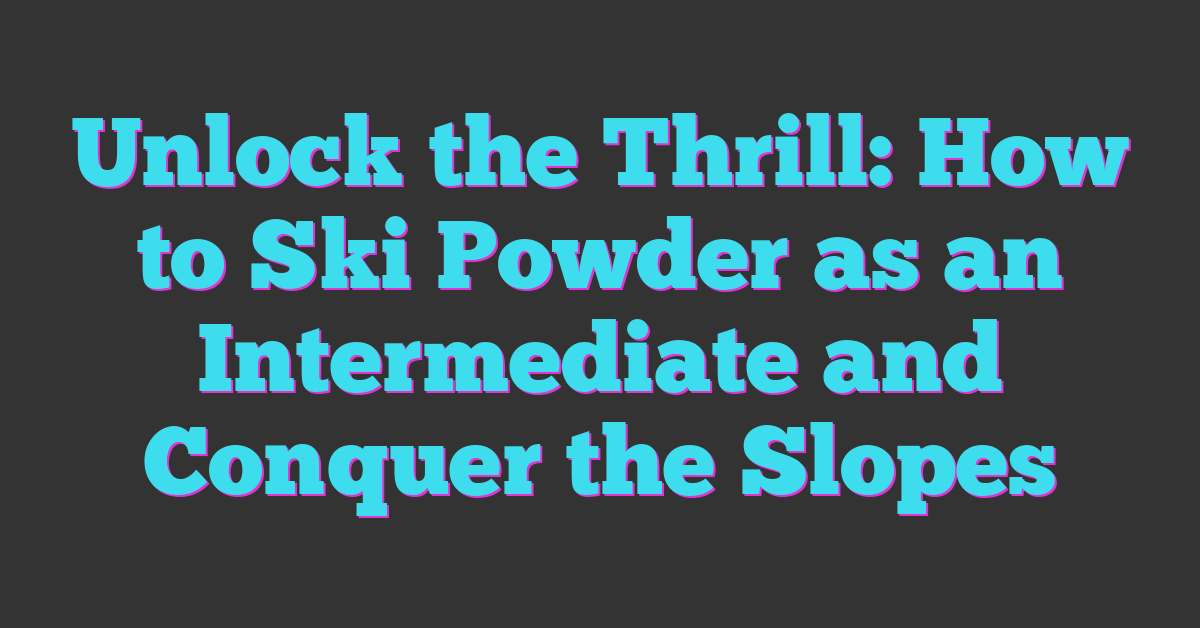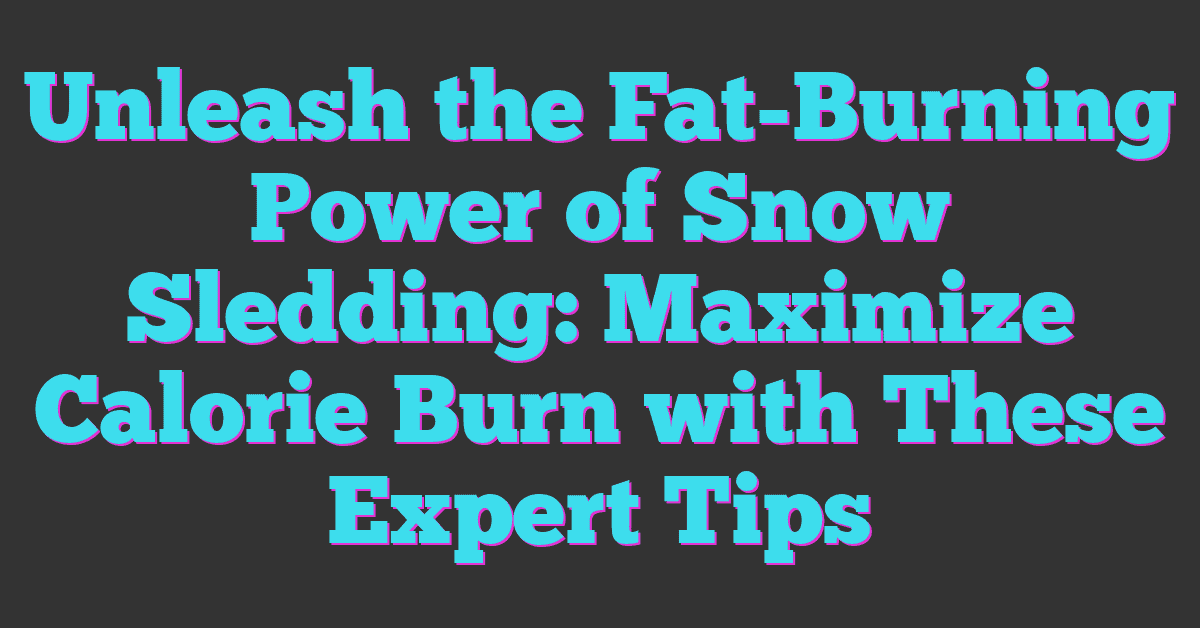Skiing powder can feel like a dream come true for any intermediate skier. The soft, fluffy snow offers a completely different experience than the groomed trails we’re used to. But diving into those powdery slopes can be a bit daunting, especially if you’re not sure how to handle the unique challenges it presents.

I remember my first time skiing powder; it was exhilarating yet intimidating. With the right techniques and a little confidence, you can transform your skiing adventure into a thrilling ride through the winter wonderland. Let’s explore some essential tips to help you navigate those powdery slopes and make the most of your time on the mountain.
Understanding Powder Skiing
Powder skiing offers a unique experience that differs significantly from groomed trails. It requires specific techniques and a different mindset to truly enjoy the deep, soft snow.
What Is Powder Skiing?
Powder skiing refers to skiing on fresh, untracked snow, typically after a recent snowfall. This snow is light, fluffy, and often deep, creating a floating sensation as I glide through it. Unlike packed snow, powder requires a distinct approach in terms of balance and technique. Skiers must adapt their movements, shifting weight back slightly to maintain floatation and control.
Benefits of Skiing in Powder
Skiing in powder offers several benefits that enhance the overall skiing experience.
- Improved Flow: Powder enables smoother turns, reducing resistance and allowing for a more fluid motion.
- Reduced Impact: The soft landing in powder decreases the chances of hard falls, providing a more forgiving surface for beginners and intermediate skiers.
- Enhanced Enjoyment: Gliding through untouched snow brings a sense of freedom and exhilaration, often resulting in a euphoric feeling.
- Skill Development: Navigating powder conditions improves overall skiing technique, fostering better balance and agility.
Experiencing the thrill of powder skiing can elevate my entire winter sports journey.
Essential Gear for Powder Skiing
Choosing the right gear for powder skiing makes a significant difference in your experience. Having the right equipment enhances performance and ensures safety and comfort on the slopes.
Skis and Bindings
Selecting the appropriate skis is crucial for powder skiing. I recommend wide, powder-specific skis that feature a rockered tip, which helps float over deep snow. Length-wise, aim for skis that reach between your chin and nose for optimal maneuverability. Pair these skis with durable bindings designed for freeride or all-mountain performance, which provide responsiveness and stability. Ensure the bindings are compatible with your boots and can handle the terrain you’ll encounter.
Clothing and Safety Equipment
Wearing the right clothing is key to staying warm and dry while skiing in powder. Invest in a high-quality waterproof and breathable jacket paired with insulated pants to keep moisture out. Choose layering options to adjust to changing temperatures and activity levels—base layers wick away sweat, while mid-layers add warmth. Don’t forget waterproof gloves or mittens and a helmet for safety. A good backpack with a hydration system can keep you hydrated and allow space for essential items like snacks, an avalanche beacon, and a first-aid kit.
Techniques for Skiing Powder
Skiing powder requires specific techniques that differ significantly from those used on groomed trails. Mastering these skills enhances the experience, allowing for smooth navigation and greater enjoyment on the slopes.
Stance and Balance
Maintain a centered stance with feet shoulder-width apart. Keep your knees bent and weight slightly forward. Stay relaxed, balancing on the balls of your feet and adjusting as the snow shifts beneath you. Distributing weight evenly helps maintain control and stability. Use your legs to absorb terrain changes, staying flexible for unexpected bumps in the powder. Upper body should face downhill while your lower body adjusts to your skiing direction.
Turning Methods
Use a combination of skidding and steering for turning in powder. Start with a wider stance to keep balance during turns. Shift weight smoothly from one ski to the other by initiating turns with your legs, rather than your upper body. Keep your turns rounded to maintain momentum and avoid digging the skis in too deeply. Employ a gentle, progressive edge engagement rather than harsh angles, allowing for fluid movements. Practice making shorter turns to enhance control and explore the dynamic nature of powder. This approach not only improves technique but adds to the thrill of powder skiing.
Overcoming Challenges
Skiing powder can feel daunting for intermediate skiers. I encountered my fair share of obstacles, but conquering them leads to incredible moments on the slopes.
Managing Speed and Control
Managing speed in powder requires adjustments to your technique. I find that staying light on my feet enhances control. Focus on making smooth, gradual turns instead of sharp cuts. Initiate turns with my legs while keeping my upper body stable. This technique reduces the chance of getting thrown off balance in the fluffy snow. Remember to keep weight distributed evenly across both skis, which helps maintain control when navigating through deep snow. Using a slightly wider stance also aids in balance, letting me flow more freely with the conditions.
Dealing with Variable Conditions
Variable conditions are common in powder skiing, presenting unique challenges. I’ve learned to adapt my approach depending on snow quality and terrain. When I encounter heavy, wet snow, flexibility in my technique is key. I lean back slightly to maintain flotation and avoid getting bogged down. On days with fresh, light powder, I adjust my turns to be more aggressive, using quick, short strokes to stay on top of the snow. Staying aware of my surroundings makes a huge difference, so I always keep an eye out for changing terrain or possible obstacles that may hinder my run. Embracing these conditions opens up new possibilities for exploration and enjoyment on the mountain.
Practicing Powder Skiing
Practicing powder skiing transforms any winter outing into an exhilarating experience. Focusing on technique and terrain makes a significant difference in mastering this unique style of skiing.
Finding the Right Terrain
Finding the right terrain is crucial for honing powder skiing skills. Seek out areas with consistent, untracked snow and gentle slopes to build confidence. Look for terrain that offers a mix of wide-open spaces and some tree lines; this combination allows for practice focused on both speed and control. Familiar trails where I can explore different snow conditions help me understand how my technique reacts. Stay aware of the locale and choose spots that match my confidence level while progressively challenging me as I improve.
Tips for Building Confidence
Building confidence in powder skiing takes time and practice. Start by skiing with friends who are experienced in powder; watching them can provide valuable insights. Begin on easy runs, allowing me to focus on balance without the pressure of steeper slopes. Make small turns and practice different techniques like skidding and steering. Gradually increase speed as I become more comfortable in the soft snow.
Visualizing success also boosts my confidence. Before heading down the slope, I mentally rehearse my moves, reminding myself to maintain a relaxed stance and adapt to changing conditions. Lastly, celebrating any progress, no matter how small, reinforces my abilities and motivates me to keep pushing my limits on deeper, untouched powder.
Conclusion
Skiing powder is an adventure that can truly transform your winter experience. It’s all about finding that balance between technique and confidence. I’ve learned that with practice and the right mindset you can turn those initial challenges into thrilling moments on the mountain.
Embrace the learning process and don’t hesitate to seek out friends who can share their tips and insights. Every run is an opportunity to improve and enjoy the unique beauty of untouched snow. So gear up and get ready to dive into the powder; you won’t regret it!
















